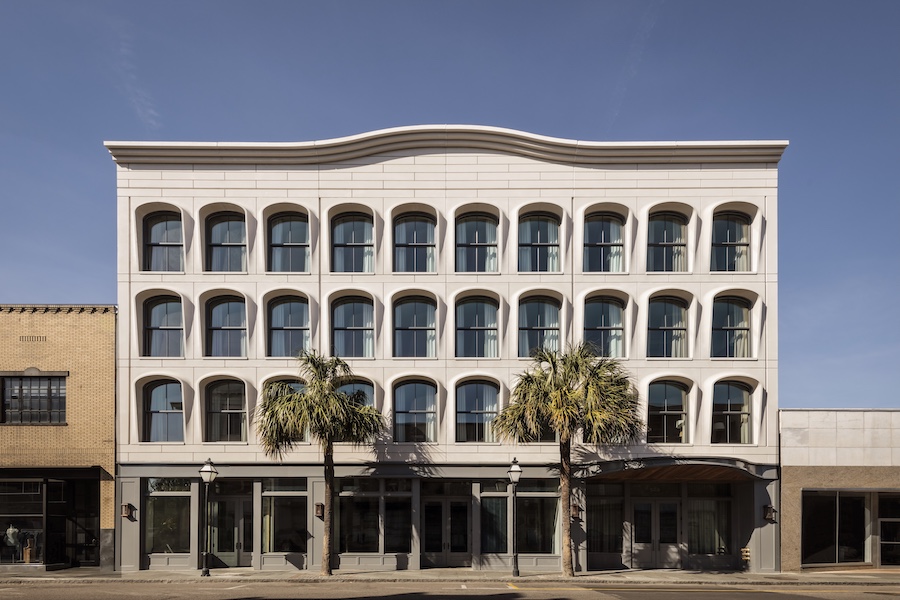Now part of the JdV by Hyatt portfolio, tommie’s highly anticipated debut—a decade after it was first conceived by Thompson’s original founder Jason Pomeranc as a more affordable sibling—comes as the lifestyle segment continues to grow in importance and ubiquity. Studio Collective, which initially signed on in May 2016, was tasked with helping to refine tommie’s identity as low touch, digital first, and community oriented. The Venice, California-based firm was also behind the just-launched tommie Austin, and the back-to-back openings of both properties (Hyatt isn’t planning to grow the brand beyond these two locations) helped distinguish their unique personalities, with a shared thread of “strong tactile materialism and hyper-local artwork,” says Christian Schulz, Studio Collective’s design director and partner.
A hallmark of tommie is small but charming guestrooms. In the Hollywood outpost that means an exercise in efficiency throughout the 212 accommodations. Floor-to-ceiling glazing has a see-and-be-seen dynamic toward the city below, while a colorful graphic blocking scheme gives the bathrooms a distinct look. (Seven roomier one-bedroom suites with 12-foot-high ceilings are located on the hotel’s top floor.)

In the lobby, a natural-honed stone bartop mixes with ceramic-clad columns, stained solid white oak floors, and hand-rubbed blackened steel accents
Design-driven and amenity-rich spaces are also part of the hotel’s ethos. Studio Collective translated that into a material palette that patinas over time. “We felt we could do something that’s not native to Hollywood and still have relevance with what we’re trying to achieve,” says Schulz, who points to “industrial Americana” as an aesthetic touchstone of the façade, which contains blackened steel and brick components. For the interiors, the design team shifted its focus, looking to the iconic Case Study House Program for inspiration. “We wanted tactility and warmth, which comes through in the details,” he says. This philosophy is expressed in features like the imposing steel-clad fireplace in the lobby capped with a handcarved wood relief. Custom low-slung lounge chairs and plush seating encourage relaxation and conversation, so that each moment brings in “a sense of craft that honors materiality,” Schulz adds.
The multimedia art program showcases the work of LA artists, including sculptor Bradley Duncan, photographer Matt Olivar, and digital artist Ellie Pritts. Guestrooms feature Dutch artist Cécile van Hanja’s colorful interpretations of LA’s midcentury residential architecture, while British illustrator Blue Logan was called on to enliven the rooftop bar Desert 5 Spot with a mural that cheekily plays on the cowboy-themed aesthetic.

Greenery, organic shapes, and natural materials evoke Mexico’s Yucatan Peninsula at the jungle-like Ka’teen restaurant
This being Hollywood, food, beverage, and nightlife options at the tommie (operated by Ten Five Hospitality) are engineered to set the scene and draw crowds. At Ka’teen, celebrated LA chef Wes Avila’s menu pays homage to the culinary traditions of Mexico’s Yucatan Peninsula in an evocative outdoor setting full of lush plantings and eclectic materials. On the rooftop with its dramatic views, Desert 5 Spot borrows design cues from the groovy 1970s milieu of Joshua Tree and the High Desert in the bar and lounge.
After five-plus years of stops and starts, “it feels wonderful to see a building and all of the little details start to show, especially when people move in and breathe life into the building,” Schulz says. “It was a long time coming.”
This article originally appeared in HD’s April 2022 issue.








